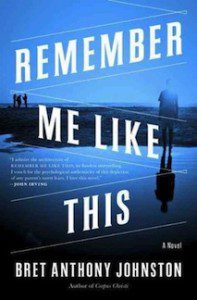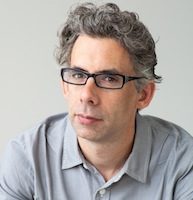
Bret Anthony Johnston’s engrossing debut novel begins with a happy ending. Justin Campbell, a kid gone missing when he was eleven-years-old, is returned to his parents and younger brother after being gone four years—four years, for Justin’s family, of posting flyers and following leads, four years of unraveling, four years of being called into morgues to identify dead runaways, four years of false hope, four years of trying to figure out how to continue on in the aftermath of such a rupture, in the dark shadows cast by so many question marks. What a miracle, when he’s brought home, saved from a kidnapper who kept him captive only a few miles from his home. What good luck. The immediate result is hugs and optimism, a shattering relief: everything will be all right now. What Johnston shows with gripping force is how happily-ever-after is only the stuff of fairy tales.
The Texas coast, and the richly realized fictional town of Southport, are as crucial to the story as any of the characters. Johnston, author of the award-winning story collection Corpus Christi, conjures a tense atmosphere in his sensuous descriptions of the physical place, in the trees and birds and storms. Heat is pervasive, and I can’t remember reading such palpable descriptions of swelter. The sense is beyond sweat and seeking shade ¾ it’s heat so hot it’s almost dangerous, air that’s “damp, bloated with gritty heat,” heat so hot it melts glue off windshields, making rearview mirrors drop to car floorboards. Along bridges and at the empty pool where Justin’s younger brother Griff skateboards, we feel the thick air as it presses in on everyone’s responses to what’s happened.

We enter the heads of Justin’s parents, Eric and Laura, his tough and loving grandfather Cecil, and his brother Griff. Johnston handles emotional nuance, the various calms and storms that erupt and pass, with a deft hand. Particularly strong is the relationship between the two brothers. The likable Griff, a couple years younger than Justin, is enamored of his older brother and protective. For Griff, Justin “sometimes seemed to glimmer, or the air around him rippled, the way it did over baking asphalt,” and “he often caught himself wanting to hug Justin, but not knowing if she should, and he’d again endure the awkward sensation of having a crush on him.” When Justin can’t do the skateboarding tricks he used to be able to, Griff intentionally botches his own.
Johnston balances moments of tenderness (restaurants offering the family free desserts after Justin’s return; old ladies giving Laura a pack of Lorna Doones; a family party on the 4th of July), with dark truths and hard unknowns. The family is cautioned not to ask Justin about his captivity. We are left wondering, for the most part, what happened. Johnston resists graphic detail; whatever Justin endured is hinted at and talked around. We’re in the same boat as the family, letting our imaginations fill in blanks. The feeling of a fundamental parental failure – inability to protect – plagues Laura. The intensity of her highs and lows match the tempestuous summer weather. “Her life – everyone’s life – seemed rigged with trapdoors and hidden, collapsible walls, panels that would open without warning and claim what had been yours, claim it only because you’d allowed yourself to believe it couldn’t be claimed.”
Even after the ending shines light on some of the lingering questions—perhaps a little too easily—mysteries remain. Chief among them is how, in time all too brief, we’re able to connect with one another. Griff sees some lightning bugs and finds himself wondering if people nearby have seen them, too, or will see them. “That he could share anything with anyone else, that he could be connected to them by a sight or sound was mystifying. Nothing seemed permanent.” This is a novel of beginnings and endings, of before and after and the threads that pull through both. Behind the trauma and well-paced, high-stakes action, it’s a story of how we go about the hard job of connecting with each other, each of us a star in our own small constellations, and how we try to find order in the chaos, whether it’s possible or not.




